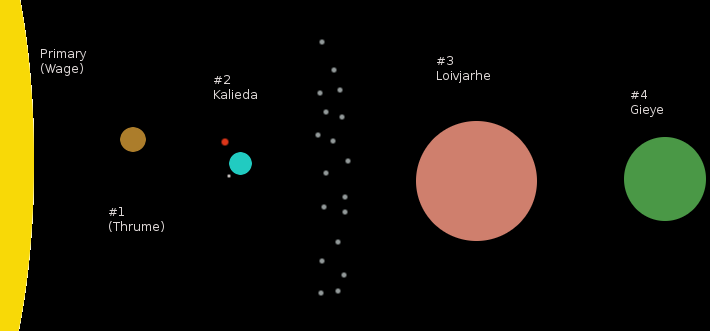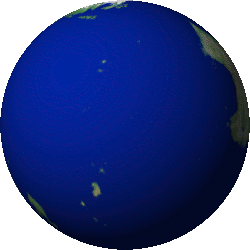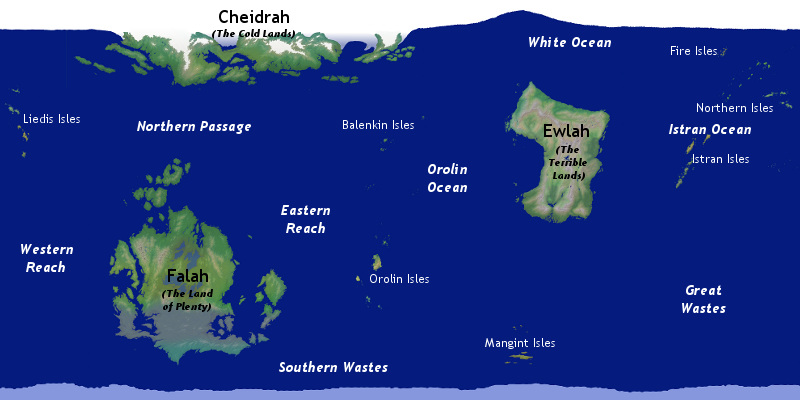The planet Kalieda
We are not alone
Kalieda is a planet, revolving around Wage, our sun. There are three other planets that share Wage with us, together with uncountable planetoids, asteroids and comets. As far as we know, only our planet is capable of supporting life.

For two particular small planetoids, Kalieda is the centre of the universe. Our larger moon (Tuustinte) is about twice the diameter of the smaller (Leprhaakhe), and about twice the distance away from us, which is why they appear to be the same size to us. It takes white Leprhaakhe just 8.23 days to complete an orbit around us, while red Tuustinte takes a more leisurely 35.91 days.

Kalieda itself takes 380.41 days to complete an orbit around Wage. Here are some other interesting facts about our planet:
- Average diameter: 13,029km
- Density: 5,498kg/m³
- Minimum distance from Wage: around 145 million km
- Maximum distance from Wage: around 149 million km
- Surface gravity: 10.04m/s²
- Axial tilt: 16.7°
- Average surface temperature: 289K
Around 87.5% of the surface of the planet is water, with just 12.5% being land. Before the Disaster, there was open ocean at both poles; now the north pole has an ice cap - scientists estimate that ice now covers around 9 million km² of the planet's surface, including much of the land in Cheidrah above latitude 70°N, though the falling sea level has exposed over a million square kilometres of new land around the globe.

One thing our illustrious scientists have not been able to determine is why the Disaster happened. Theories have included a lessening of the heat energy emerging from Wage, or a change in our atmosphere to either reflect more of that energy away or to allow more heat to escape from the planet surface, or (my personal favourite) the possibility that Wage has led us into an area of space that is more dusty than it was before - with the dust dispersing some of Wage's energy before it reaches us. Whatever the cause of the Disaster, most scientists agree that the effect has been both the loss of water to the Cheidran ice cap, and also lowering the temperature of the oceans to such a degree that they have shrunk in volume - hence the retreat of the shoreline and the disruption of our planet's ecosystem.